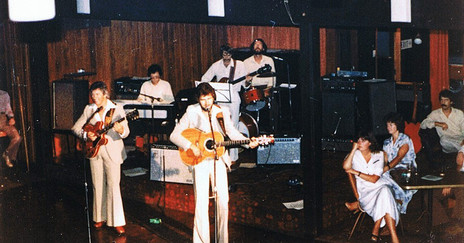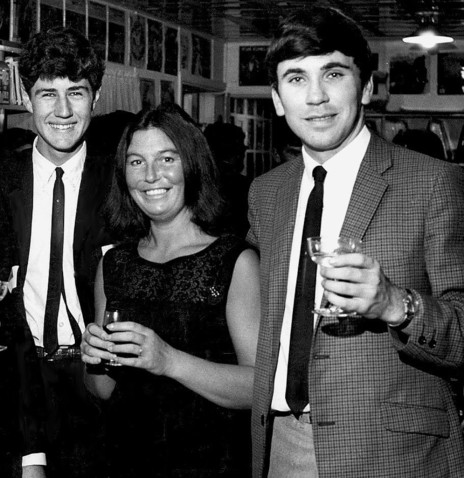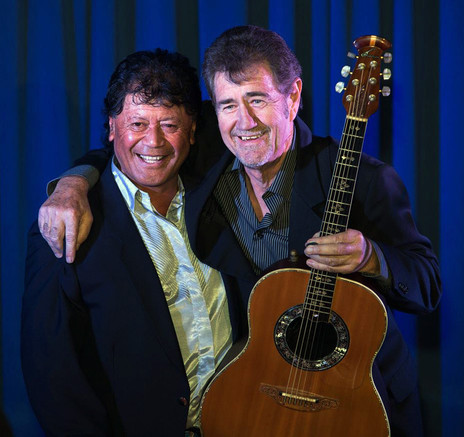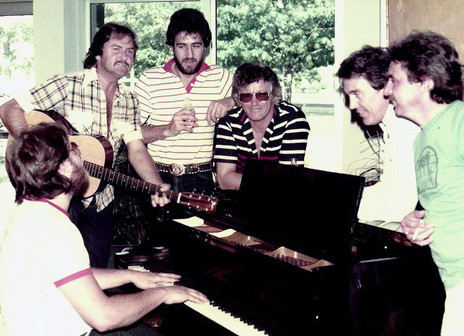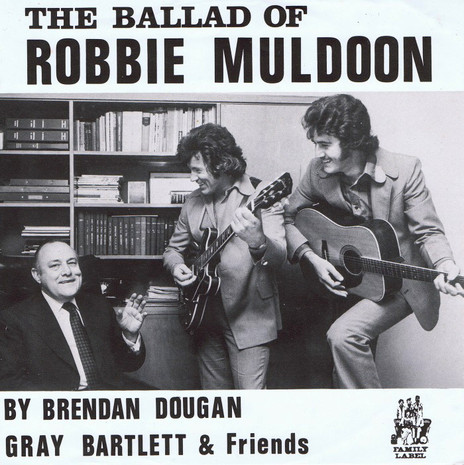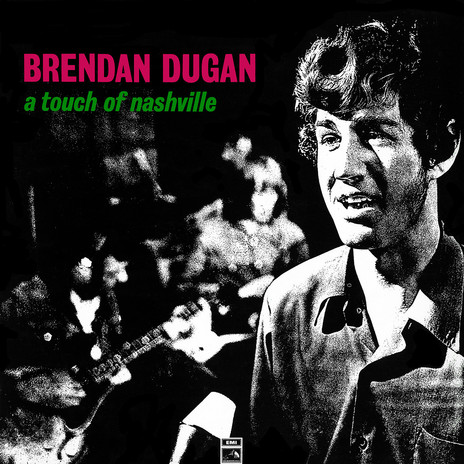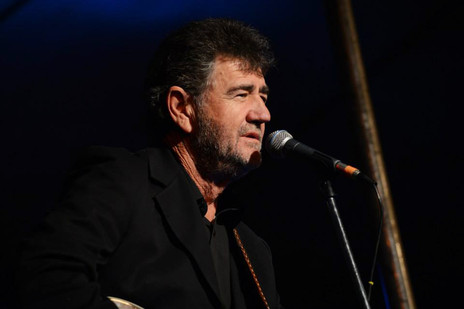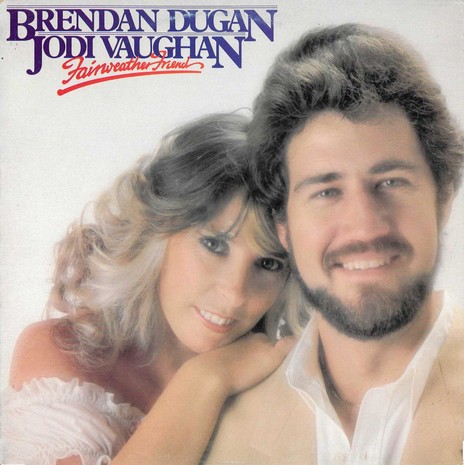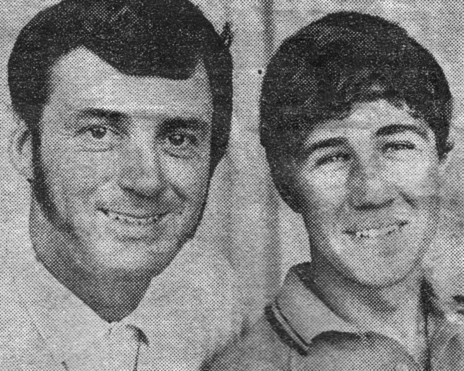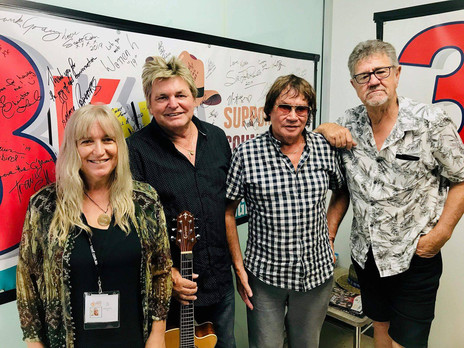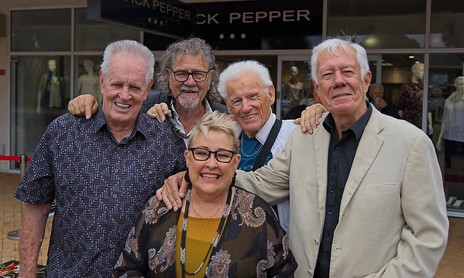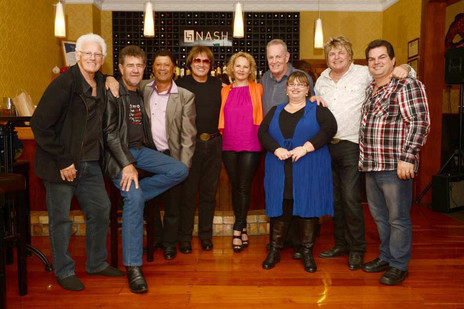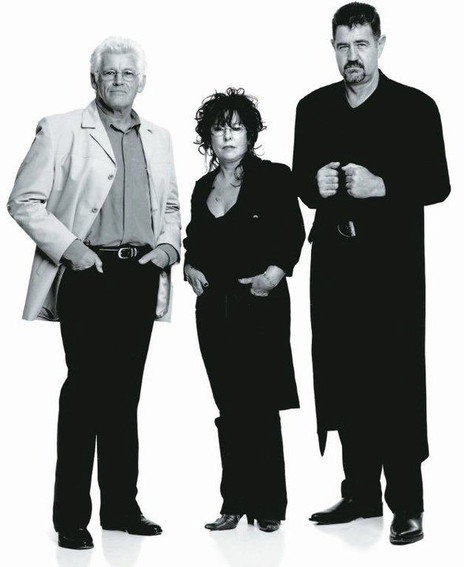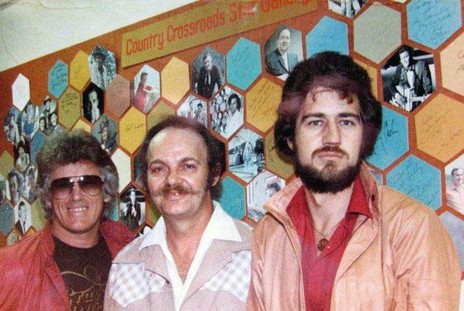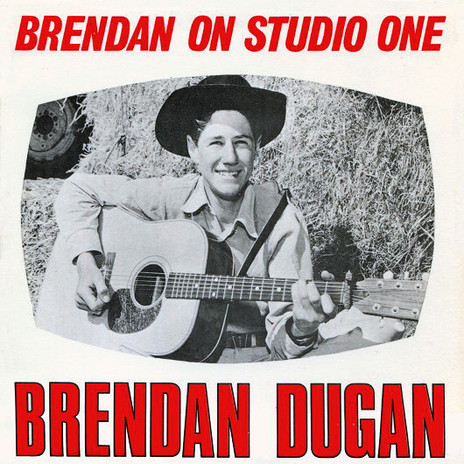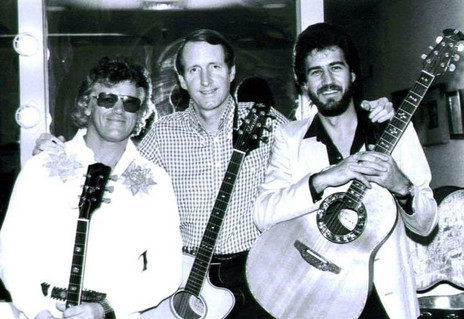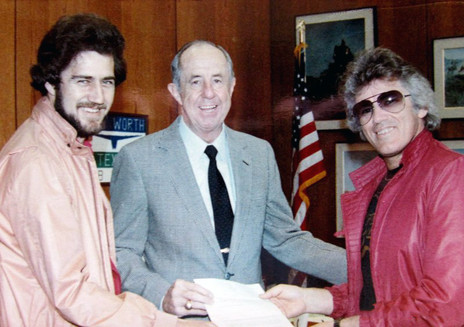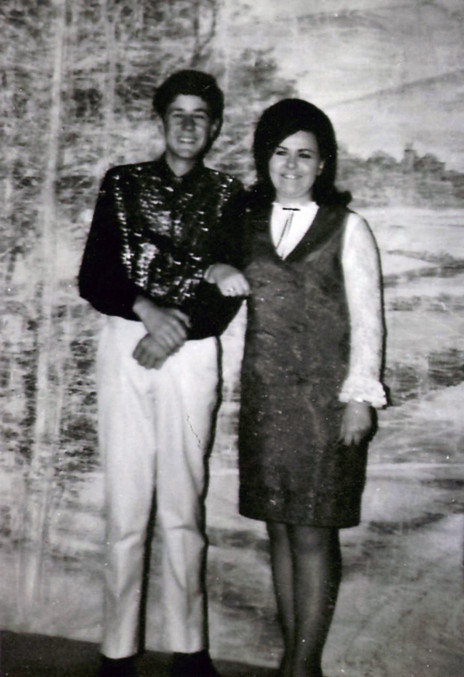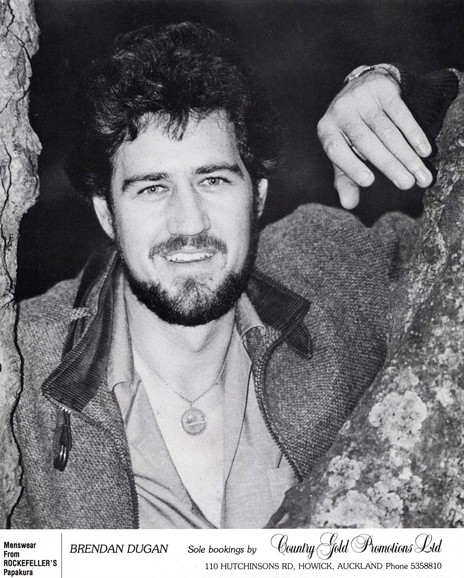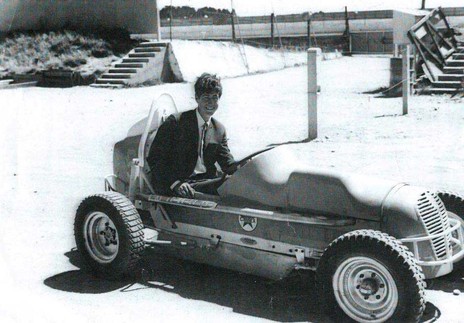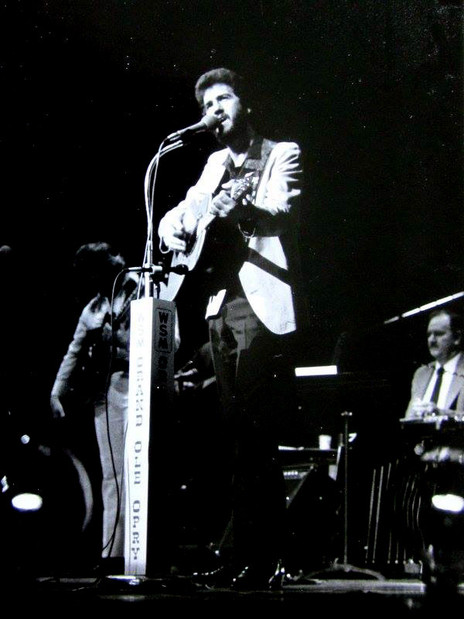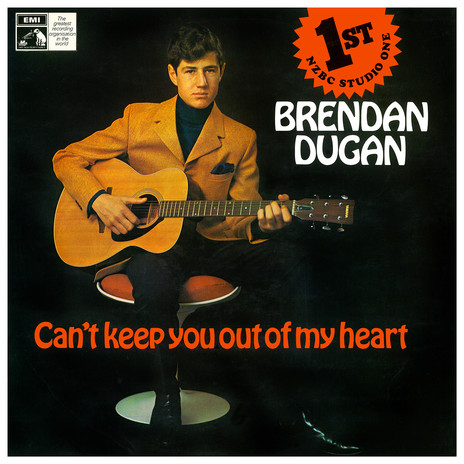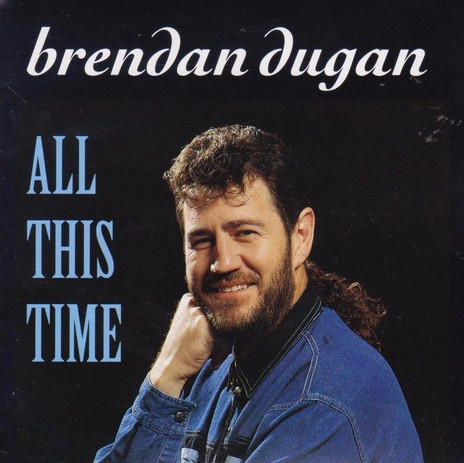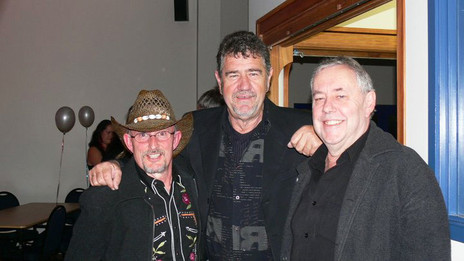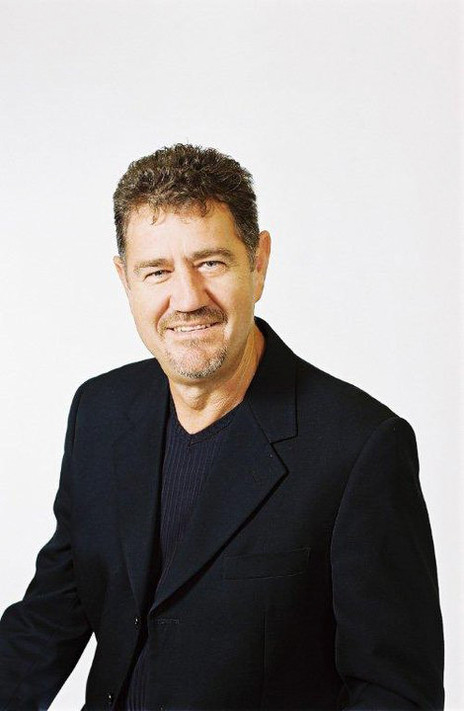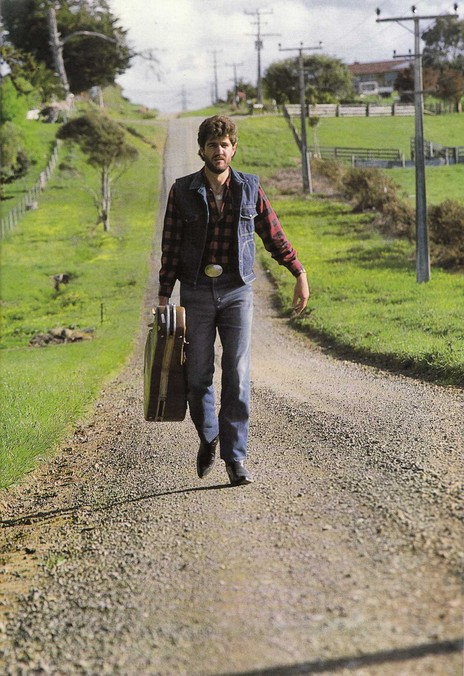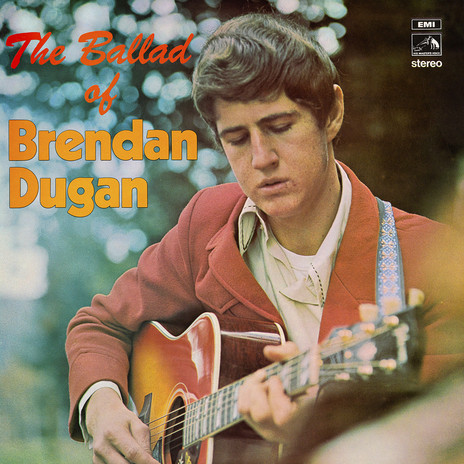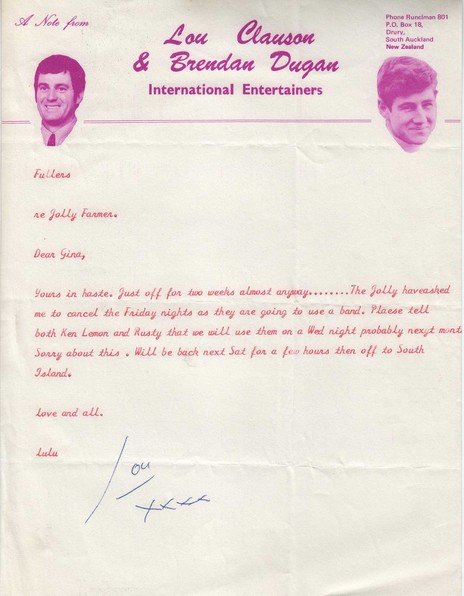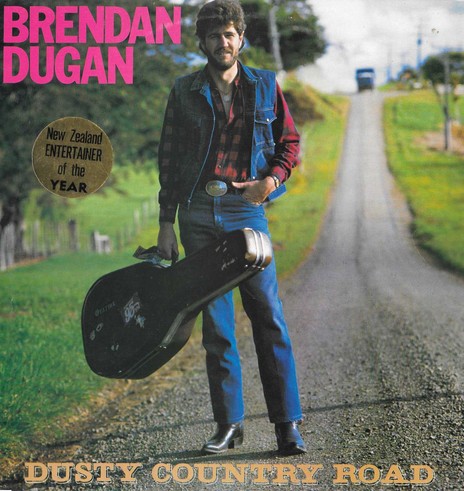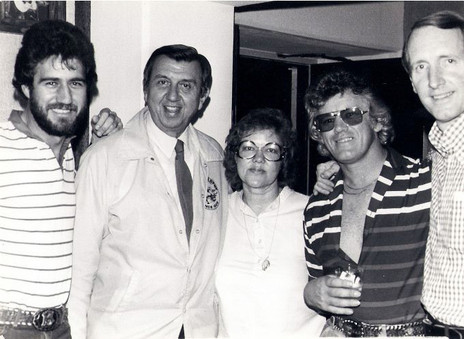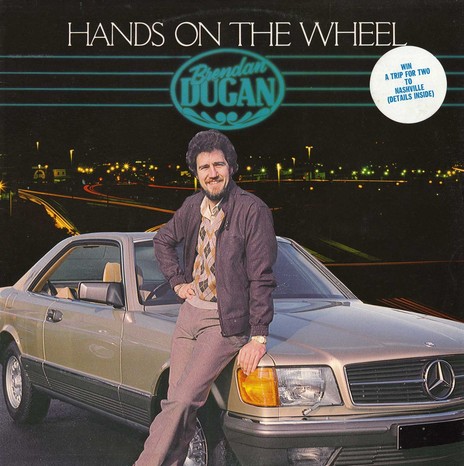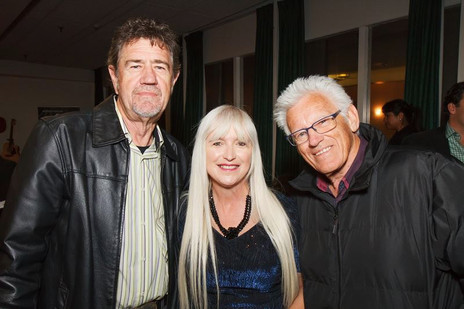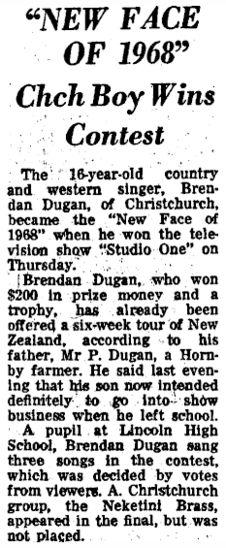The 1980s would catapult Dugan into a whole other stratosphere with his regular appearances on the prime-time TV show That’s Country.
He released three albums in quick succession for HMV before two charting singles with guitarist Gray Bartlett, with whom his name would become synonymous. But the 1980s would catapult Dugan into a whole other stratosphere with his regular appearances on the prime-time TV show That’s Country.
Even his controversial departure from the show couldn’t quell the public’s thirst for that big voice. In fact, his popularity increased and in 1985 he was just the second country music artist to be named NEOA Entertainer Of The Year. He was even making headway in the United States.
Despite a couple of self-enforced lay-offs and assertions that he would probably rather be a racing driver, Dugan has continued as a performer. Since the heady days of the 1980s, there were reunions with Bartlett and former duo partner Jodi Vaughan, but the audiences seemed to be the same faces that had been coming to shows back in the day.
After a quartet of solo albums on major labels, Dugan’s last album was an independent effort not even available in shops. Just when he’d resigned himself to life on the nostalgia circuit, and almost become comfortable with that notion, he received an unexpected phone call in late 2015.
Country music promoter and singer-songwriter Aly Cook approached Dugan with the idea of recording a new album with her producer – the producer and co-writer of OMC’s ‘How Bizarre’, Alan Jansson. The two men met in Thames in October.
“I said to him, ‘Why would you want to record a 64-year-old man?’” Dugan recounted. “He sat there and he said, ‘You know something? My dad thought the absolute world of you and he would be very proud if he knew I was recording you.’ He said, ‘You deserve it.’ So that was pretty cool.”
Dugan had set himself three or four more years doing the clubs and then getting out, but the Jansson interest was a game changer, akin to producer Rick Rubin taking on Johnny Cash in the 1990s. The comparison wasn’t lost on Dugan, who since 2008 had occasionally taken to the road with his own Cash tribute show. He’d been a fan since the 1960s when he first became interested in country music.
Brendan Dugan was born in Christchurch on 29 February 1952 (a leap year), the second of three children for factory worker Patrick and Coral Dugan. Pat was part of a post-war concert party that entertained around Canterbury and he later took up the drums. He would sing traditional Irish music before finding his way to country ballads.
It was while watching a skiffle band at the Yaldhurst Hall as a youngster that Brendan Dugan said to himself, “I’m gonna be a star.” When he was 11 he was given a Hofner guitar. After a few lessons he found greater results from the phonograph in his bedroom, working out the chords to LPs by George Jones and home-grown superstar John Hore.
“I still believe to this day that John Grenell – or John Hore in those days – just has a fabulous voice. No one will ever, ever, ever sound like John Hore. It’s a very special voice. And when I was a kid, I made myself up a radio, because in those days you couldn’t afford to buy them, and all his records were played right beside me, on my bed.”
Dugan entered and won a series of talent quests – one of which, when he was 13, rewarded him with a recording session and a 45 release on Christchurch entrepreneur Hoghton Hughes’ Sailor-Boy label. The result was Ian Tyson’s ‘Four Strong Winds’ b/w Marty Robbins’ ‘Begging To You’, both of which Dugan had learned from his John Hore collection.
There were two more singles on Sailor-Boy – the Scotty Wiseman country standard ‘Have I Told You Lately That I Love You’ and ‘All The Time’. When the former topped the country radio chart in Invercargill for 10 weeks, Hughes decided to record an LP on his newly named Master label. Retailers were apparently unsure about stocking a label by the name of Sailor-Boy. Country’s Greatest was released when Dugan was 15.
It was an early introduction to the business practices of Hoghton Hughes, who sometimes referred to himself as “Hoghton the Hustler”. “Even the photo on the cover with me standing beside the tractor and the (manufacturer) David Brown sign was blacked out so no one was getting any free publicity. It was funny days,” Dugan lamented. “They still sell the bloody tracks off that and it pisses me off. And I’ve never ever been given a cent.”
One day in 1968, Coral Dugan spied an advert for a new NZBC television show called Studio One that included a New Faces talent competition. She sent in one of her son’s records and although the talent coordinators weren’t impressed with the quality, producer Christopher Bourn insisted they concentrate on the young man’s voice.
Brendan Dugan made the cut and won his heat with ‘Do What You Do Do Well’.
Brendan Dugan made the cut and won his heat with ‘Do What You Do Do Well’. Hoghton Hughes pounced, repackaging four tracks from Country’s Greatest, including ‘Do What You Do Do Well’, as the Master EP Brendan On Studio One. Then Dugan went on to win the New Faces final with the big ballad ‘There Goes My Everything’, although he had to keep it a secret for a few days.
When the final was televised, Dugan suddenly had HMV and the Joe Brown label vying for his signature. Pat Dugan decided that as John Hore was already well established with Joe Brown and unlikely to be usurped as their first priority, his son should go with HMV.
There was a surprise when Dugan arrived in Wellington to record his first HMV LP with producer Howard Gable. “I flew into the airport, Howard met me,” Dugan remembered, “and I went to hop in the back seat of the car at the airport and who should be in there? Allison Durbin. And of course to me Allison Durbin was a big star, but I’d forgotten that I’d become a big name overnight – you know, new show, one TV channel.”
Released before the year was out, Dugan’s debut LP for the company was Can’t Keep You Out Of My Heart, featuring the NZBC Symphony Orchestra, later renamed the New Zealand Symphony Orchestra. The Gable-produced ‘I’d Give A Whole Lot Of Me For Just A Little Bit Of You’ was the first of three singles in 1969. The others were ‘Your Loving Takes The Leaving Out Of Me’ and ‘Ballad Of Pancho Lopez’ b/w Merle Haggard’s ‘Mama Tried’, all produced by Peter Dawkins.
By that time Dugan had moved to Auckland at the behest of veteran entertainer Lou Clauson, who was in the process of parting ways with his long-time duo partner Simon Mehana. Nearly 17, Dugan moved in with the Clauson family in Drury, performing with Clauson in cabaret settings and at dance spots and also a stretch on the RSL circuit in Australia.
“He taught me the trade, he really, really did. He taught me how to talk on stage, how to entertain on stage. I always believe if I hadn’t had him for those first couple of years, as a teacher, I wouldn’t be like I am on stage now,” Dugan said.
Dugan’s final two HMV albums were Alan Galbraith productions – The Ballad Of Brendan Dugan in 1970 and A Touch Of Nashville in 1971 – before he cut ties with Clauson and struck out on his own in 1972, although Clauson did help him sort out his next venture.
An American entertainment agency offered Dugan a well-paid contract to perform at US Army bases in South-East Asia, with the enticement of a green card at its conclusion. “They were just so sick of American acts,” Dugan recalled. “They wanted something different.”
He arrived in the Philippines with music charts for a five-piece band to find he was being backed by a fabulous 14-piece Filipino orchestra. The musicians quickly wrote a new set of 14 charts at $7 per song, and Dugan eventually went on to Hong Kong and Taiwan. A week before going on to his next stop in Okinawa, a female singer was shot dead on stage there. That was enough for Dugan and he returned home and got married.
“They begged me to come back, but I wouldn’t take my wife there. You didn’t leave your hotel unless you had a bodyguard. You just stayed in your hotel in Manila. It was pretty bad in those days.”
Out of the blue in 1973, Dugan got a phone call from guitarist Gray Bartlett, back in New Zealand after several years working in Britain with Rolf Harris. Bartlett had a week-long booking with country singers Rusty Greaves and Val Proctor at the Onekawa Hotel in Napier, for which they needed another singer. It was the start of a long and successful partnership.
There was an early hiccup when Bartlett organised the recording and release of the Hits Country Style LP on the Mercury label. Although Dugan sang 10 songs and there were four guitar instrumentals, the record was credited to Bartlett, with the much smaller byline “Featuring Brendan Dugan”. “Back in those days, Gray was still up to his old tricks,” Dugan laughed. “That came out and I went off my trolley.”
It was a beef on a Rotorua golf course that brought about the pair’s first entry in the singles chart in mid-1975. Bartlett retired to his room to cool off and reappeared an hour later with a song about National Party leader Robert Muldoon. ‘The Ballad Of Robbie Muldoon’ appeared on the Family label and went to No.4 on the chart in August. Muldoon was Prime Minister three months later.
Dugan and Bartlett saw singer Jodi Vaughan on the final of South Pacific Television’s The Entertainers and asked her to join their act. The trio toured almost constantly to every small town and big city in the country for the next 10 years. Dugan’s marriage was a casualty of the road.
In 1976, Dugan and Bartlett released the single ‘All Blacks Song’ on Family. The New Zealand rugby team were gearing up to tour apartheid South Africa, with their five Māori players and Samoan Bryan Williams bestowed “honorary white” status. The album Brendan and Gray followed on Pye.
That year, Bartlett became bandleader on South Pacific Television’s Touch Of Country, with Dugan and Vaughan as regular performers, but it was TVNZ’s That’s Country, which debuted in 1980, that made household names of the trio and a gaggle of home-grown country performers.
And the major record labels were lining up. CBS signed Dugan and Vaughan, and in 1982 released the duo LP Fairweather Friends, produced by Dick Le Fort. It peaked at No.15 on the album chart and went platinum. The single ‘No Fool Like An Old Fool’ got as far as No.12 and spent 10 weeks in the NZ Top 40.
Dugan’s inclusion in the most promising male vocalist section of the NZ Music Awards after seven LPs and 14 years as a professional brought collective shaking of heads from within the industry. When he received the award over former Golden Harvest singer Karl Gordon and Dance Exponents frontman Jordan Luck, label bosses were incensed. Dugan was bemused, his acceptance speech being, “I’ve reached the promising stage.”
In the Auckland Star, CBS manager Murray Thom tried to justify Dugan’s nomination and win. “It was a recording industry prize and Brendan has really just got started with a recording career. He has always been known as a pub and club singer and his companies in the past did not promote his albums.”
The loudest protests came from Dugan’s first label head Hoghton Hughes, who called the decision stupid and told the paper until some logic and credibility could be introduced his Master successor, Music World, would no longer participate. Of course by that stage Hughes had re-released most of Dugan’s 1967 Master catalogue on a myriad of New Zealand country compilations.
The early 1980s saw the first of many trips to the United States for the International Country & Western Music Association Awards in Fort Worth, Texas, with Bartlett, Patsy Riggir and Ritchie Pickett. Later trips brought appearances on TV shows such as Nashville Now and The Barbara Mandrell Show, engagements at all manner of honky tonks and a performance on the Grand Ole Opry in Nashville with Bartlett. Mandrell even asked Dugan and Bartlett to tour the States with her, but schedules couldn’t be worked out.
Eight out of a total 15 trips to the States over the years were for the New Zealand Tourism Board, playing theatre dates promoting New Zealand. A film would complement the performances and a Canadian-based Māori cultural group sometimes joined them.
Having spent his HMV years recording what he was told and then picking from his live repertoire of Merle Haggard, Johnny Cash and Neil Diamond for the albums with Gray Bartlett, Dugan was spoiled for choice when it came to selecting cuts for his fifth solo album.
Producer Dick Le Fort had collected a plethora of obscure tracks and Dugan sat down and picked the eyes out of them. “Dick was pretty good at picking songs. He would just give me heaps and heaps and heaps of stuff and I’d go through it, because they had the stuff straight out of America in those days,” Dugan recalled.
Hands On The Wheel was released on CBS in 1983 and included Willie Nelson’s title track, Russell Smith’s ‘Your Eyes’, the Charlie Rich album track ‘Even A Fool Would Let Go’ and Gram Parsons’ ‘Ooh Las Vegas’ as well as a haunting reworking of The Beatles’ ‘I’ve Just Seen A Face’ as a big ballad.
Despite being at the top of his game and having just put out his most consistent LP to date, there was a storm brewing on That’s Country. Former Four Fours drummer Trevor Spitz, one of the show’s producers, had taken on the management of singer Suzanne Prentice, and Dugan and others believed there was a conflict of interest and that Prentice was being favoured.
Dugan organised a secret petition for the cast and band to sign and present to executive producer David McPhail, of satirical comedy team McPhail & Gadsby, but one of the artists spilled the beans. “So, I got called into McPhail’s office and he fired me,” Dugan said. “And I went, ‘Whoa. Whoa, whoa, whoa, whoa.’” When Gray Bartlett and Jodi Vaughan stuck up for Dugan, they too were fired.
The resulting Commission of Inquiry into That’s Country released in April 1984 made recommendations to TVNZ executives, stating, “Some artists on the programme with or without justification, saw themselves as missing out on opportunities because of alleged unfair concentration on the career of Miss Prentice.”
The sackings were big news in 1983 and the unexpected result was that the public couldn’t get enough of these outlaws on the live circuit. “We just packed them day in and day out,” Dugan said. “We were going three and four months at a time without a day off. We worked our arses off.”
Late in 1984, Dugan decided it was time to go it alone. He, Bartlett and Vaughan signed off with a TVNZ special and the split was made in January 1985. Entrepreneur Lew Pryme took over Dugan’s management, while his new show included guitarist Pete Bayliss and former That’s Country co-star Maree Humphries, the sister of his new wife Sandy.
There was also a label switch to RCA for 1985’s Dusty Country Road, again produced by Dick Le Fort. And in November Brendan Dugan was named New Zealand Entertainment Operators Association Entertainer Of The Year, only the second country music artist to win the accolade, after Patsy Riggir two years earlier.
More trips to the United States followed before Dugan took a self-imposed sabbatical in early 1988, playing only occasionally. He bought a restaurant in Rotorua, naming it Doogies. He had earlier been a partner in Auckland’s Country Gentleman Restaurant. There were also stints as a car salesman and real estate agent.
The inevitable happened in 1990 when Dugan, Gray Bartlett and Jodi Vaughan reunited for the Together Again album on Festival and shows all over the country. The album spent the first week of September at No.1.
“That was the most successful New Zealand tour of any genre. It was just unbelievable. We were doing five shows in some towns and going back to do another one.” But enter the dodgy promoter who gambled away the tour proceeds, costing Dugan $180,000. “That was setting us up for life. That was a home back then.”
In 1992, Dugan released his first solo album since 1985, with All This Time. Recorded at Bruce Lynch’s the Boatshed, it was produced by New Zealand-born session guitarist Billy Lang, who had recorded with acts as diverse as Boney M, John Farnham and Harold Faltermeyer. It included five songs written by jingle king Murray Grindlay and his co-writers as well as Dugan’s old mate Ritchie Pickett’s ‘Honky Tonk Heroes’.
Due out on Festival, there was a TV campaign all set to go when Festival NZ boss and Dugan champion Jerry Wise died suddenly during a boat cruise. Nobody else at Festival had any belief in country music, let alone Brendan Dugan, and All This Time received zero promotion.
Later they rang Dugan to tell him there was a mountain of the albums in the Festival warehouse and did he want them. “I said, ‘Well, how much?’ ‘No, you can have them.’ And they sent boxes and boxes and boxes of them to me.”
There was another tour with Bartlett and Vaughan in 1995 as well as the album Together Again: The Reunion on BMG. In fact, the ensuing years would see the trio feature in various package tours and albums with the likes of Patsy Riggir, the Hamilton County Bluegrass Band and Eddie Low under the guises of Highway Of Legends or True Legends, but Dugan drew the line at taking part in the That’s Country reunion tour in 2012.
Four decades after his Studio One New Faces win, Dugan released the independent album 40 Years On in 2008. Alongside sentimental favourites like ‘Just A Closer Walk With Thee’, ‘Ring Of Fire’ and ‘Yesterday’, he took on Crowded House’s ‘Better Be Home Soon’ and Max Merritt’s ‘Slipping Away’.
In spite of all his success, Brendan Dugan felt most comfortable behind a steering wheel. He raced in Escort Mexicos in the mid-1970s, a Datsun in the mid-1980s and long enduros and various celebrity races through the years. He competed in the six-day Targa New Zealand Rally in 2005, driving his BMW from 126th to 26th place to win his class. “At the end of the day, my first love would have been to race a motor car,” he said.
